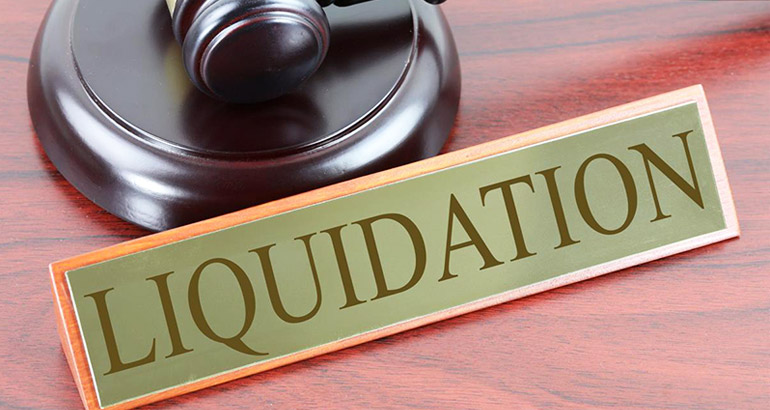The smart Trick of Company Liquidation That Nobody is Talking About
The smart Trick of Company Liquidation That Nobody is Talking About
Blog Article
Getting My Company Liquidation To Work
Table of ContentsThe 9-Minute Rule for Company LiquidationThe smart Trick of Company Liquidation That Nobody is DiscussingCompany Liquidation - QuestionsSome Known Facts About Company Liquidation.Company Liquidation Things To Know Before You Get This
A liquidator is particularly selected to manage the ending up of a business's affairs in order for it to be shut down normally when the business is going bankrupt. The liquidator is an objective third party that looks after the sale of firm possessions in order to pay off any arrearages.Their duty includes, but is not restricted to: Objective Overseer: A liquidator is tasked with working as a neutral 3rd party to look after the whole company liquidation procedure. Produce Statement of Matters: Liquidators should develop a thorough declaration of affairs document. This file is dispersed to financial institutions, outlining the current economic condition of the company at the time of its liquidation.
After the liquidation of a firm, its existence is erased from Firms House and it discontinues to be a legal entity. If supervisors navigated the procedure uncreative, there would certainly be no charges or individual obligation for strong financial obligations anticipated. Now, with a fresh start, directors can discover brand-new business possibilities, though professional consultation is suggested.
Company Liquidation Fundamentals Explained
If even more than 90% of all firm investors concur, liquidation can take area on brief notice within seven days, the minimum statutory notice for creditors. Nevertheless, normally, the larger the liquidation and the even more properties and resources business has, the longer the procedure will certainly take. 'Do I need to pay to liquidate my company?', the response will rely on whether your organization has any kind of properties remaining when selling off.

We understand that no two firms are the very same, which is why we will certainly put in the time to learn more about your business so we can recommend the ideal training course of activity for you. We only work in your benefits, so you can be absolutely positive in the service we provide.
Examine This Report about Company Liquidation
In the UK, there is an established procedure to shutting down or restructuring a minimal business, whether it is solvent or bankrupt. This process is known as liquidation and can just be dealt with by a licensed bankruptcy specialist (IP) based on the Insolvency Act 1986. There are 4 main sorts of company liquidation procedure: Creditors' Volunteer Liquidation (CVL); Compulsory liquidation; Administration; and Members' Volunteer Liquidation (MVL).

In these Learn More Here circumstances, it is vital that the business discontinues trading; if the service remains to trade, the supervisors might be held directly responsible and it can lead to the bankruptcy specialist reporting wrongful trading, referred to as misfeasance, which might lead to lawful action. The directors assign an insolvency practitioner and when this has actually been agreed and validated, there is a meeting with the shareholders.
Obviously, if there are no investors, this step of the process is not required (Company Liquidation). The IP takes control of the business and begins the firm liquidation process. The directors are no more associated with what occurs, consisting of the sale of the firm's properties. If the directors desire any of the assets, they can notify the IP.
Company Liquidation Things To Know Before You Buy
The primary difference is that the firm's lenders applied to the court for a winding up order which compels the financially troubled company right into a liquidation process. For the most part, creditors take this activity as Check This Out a last hope since they have not gotten payment via other kinds of settlement. The court designates a bankruptcy professional, also recognized as an official receiver, to perform the mandatory firm liquidation process.
This sort of company liquidation is not volunteer and directors' conduct is reported to the UK's Secretary of State once the liquidation procedure has been finished. For that reason, any kind of director that falls short to accept the IP or has actually been involved in director transgression, or a deceptive act, might result in severe effects (Company Liquidation).
It is used as a way to secure the firm from any lawsuit by its financial institutions. The supervisors of the company consent to make routine settlements to resolve their debts over a period of time. The designated manager takes care of the volunteer management process, and receives the repayments which they then distribute to lenders according to the concurred quantities.
Company Liquidation Can Be Fun For Anyone
This supplies the firm with time to develop a plan moving forward to save the business and avoid liquidation. However, at this point, directors hand control of the company over to the assigned administrator. If a company is solvent yet the directors and shareholders desire to close the business, a Participants Voluntary Liquidation is the right option.
The firm liquidation process is taken care of by a liquidator selected by the directors and investors of the business and they must authorize a statement that there are no financial institutions staying. The liquidation process for an MVL is comparable to that of a CVL in that properties are understood but the earnings are distributed to the supervisors and the shareholders of the business go after the liquidator's fees have actually been paid.
Report this page